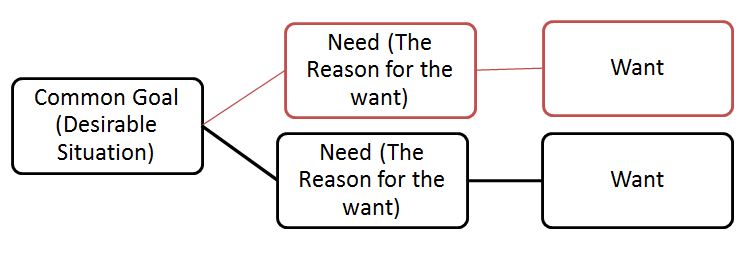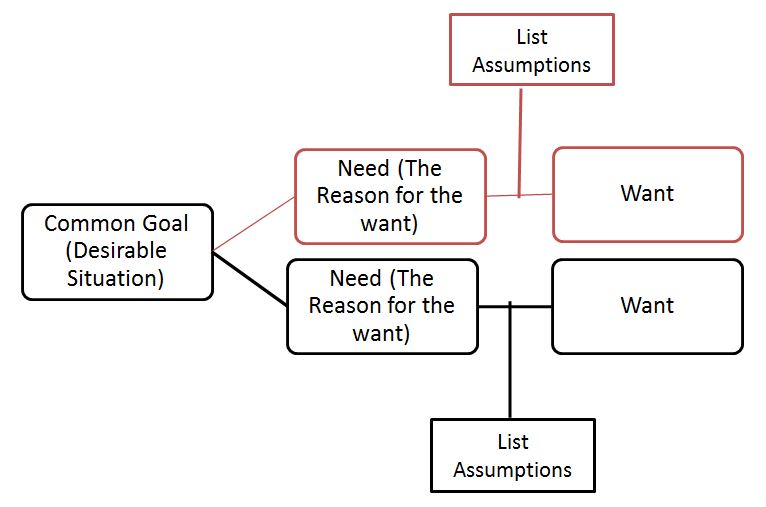We often struggle to see views different than ours. Though we may make the effort, we keep coming back to our viewpoint to frame the correct answer. In sales, it is even more difficult because we are trying to have the person/organization to see our side, but also to resolve the problem by purchasing a product/service from us. Complicating matters is many organizations have already solved the problem before they even give us an opportunity. I can take it a step further and emphasize how we try to manipulate customers through a sales funnel so that they will arrive at the right decision.
I have found this process (Marketing Funnels) and attitude demonstrates a lack of respect for the customer. I even shutter when I hear Lean Consultants talk about applying Value Stream Mapping and ridding waste in the marketing funnel. I believe it is more Lean to demonstrate a willingness to understand and co-create solutions with the customer. This does not mean that we must customize every product/service. It does mean that the customer has the ability to accept our product/service as is or make modifications for their particular needs. This is becoming more prevalent of course with Smart devices and considering that the majority of products have a smart function. It also applies to services for example when we allow customer facing employees the ability to adapt to customer needs.
This is easy to say, but it is not so easy to do. Most people are not trained appropriately to have an open mind to other sides of a problem. Most of us see a customer being too particular or making unreasonable request instead of an opportunity. One of the methods that I believe can assist people in learning how to see the other side of a problem is the Theory of Constraints Evaporating Cloud Process. It is more powerful than Lean tools such as 5 Whys because it is not about finding the correct solution or best solution, but it promotes finding a co-created solution. One that is a workable condition for both parties, and of course, that is what we are seeking.
The Evaporating Cloud is a simple process depicted below with Red being the Customer side and the Black being the supplier.
 When we first enter into a conversation, we both have certain wants that seem conflicting. What most sales people do is ask questions to find the customer needs that drive their wants. We will demonstrate our wants and needs as a superior alternative. It is a conflicting and opposing view. The problem that exists is that we don’t spend time identifying the assumptions that drive the need statements. We can take the same cloud and add an assumption test. This way we can find assumptions that are wrong and also identify assumptions that will drive needs that can lead to a common goal or a desirable alternative for both parties.
When we first enter into a conversation, we both have certain wants that seem conflicting. What most sales people do is ask questions to find the customer needs that drive their wants. We will demonstrate our wants and needs as a superior alternative. It is a conflicting and opposing view. The problem that exists is that we don’t spend time identifying the assumptions that drive the need statements. We can take the same cloud and add an assumption test. This way we can find assumptions that are wrong and also identify assumptions that will drive needs that can lead to a common goal or a desirable alternative for both parties.
The hard part of the exercise is to face up to your own assumptions. Identifying assumptions are not that difficult. Define the reasons you assume that this particular want can meet the need that you have. List all the assumptions that you can think of. We want to find out why getting the Want is necessary to fulfill the Need. We want to determine if these assumptions are really valid and if we can make any of them invalid. If we do that the invalid assumption becomes our solution.
The Evaporating Cloud enables us to look at both sides of an issue in a way that creates awareness and empathy for the other side. We ensure that both parties’ feelings are treated with respect. If we want to apply Lean to sales and marketing, respect needs to be more than an internal function. It needs to be demonstrated in our dealings with our customers. The Evaporating Cloud allows for this to happen.
A great primer for the Evaporating Cloud is Thinking Smart: Applying the Theory of Constraints in Development Thinking Skills. For a complete analysis of the Theory of Constraints thinking process tools, I recommend, The Logical Thinking Process: A Systems Approach to Complex Problem Solving (not for a beginner).

